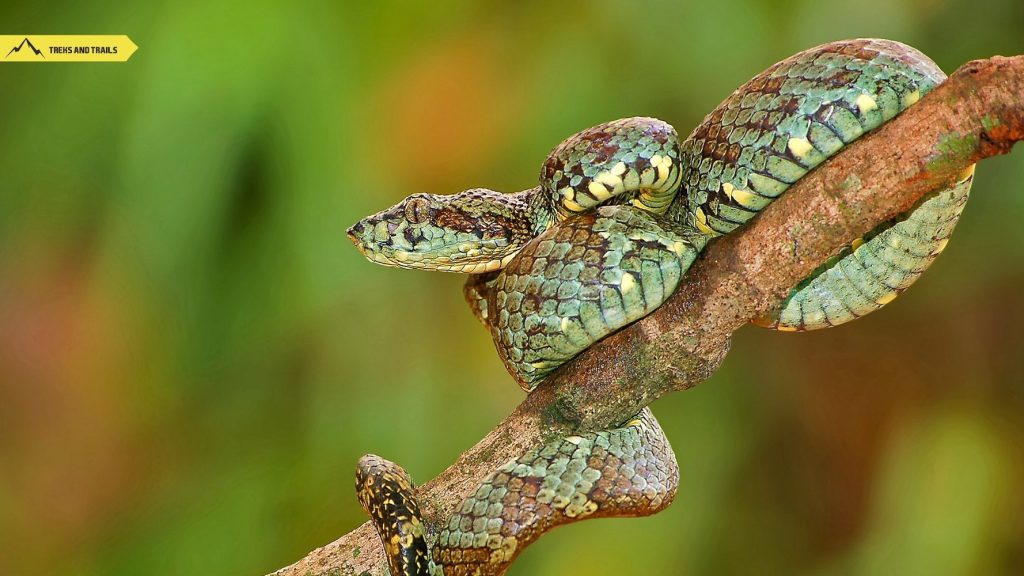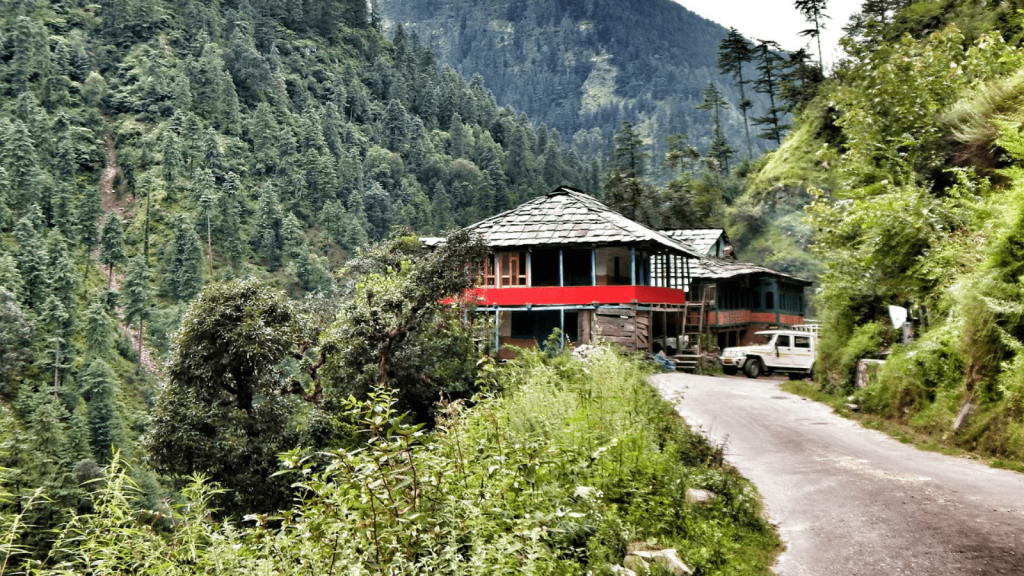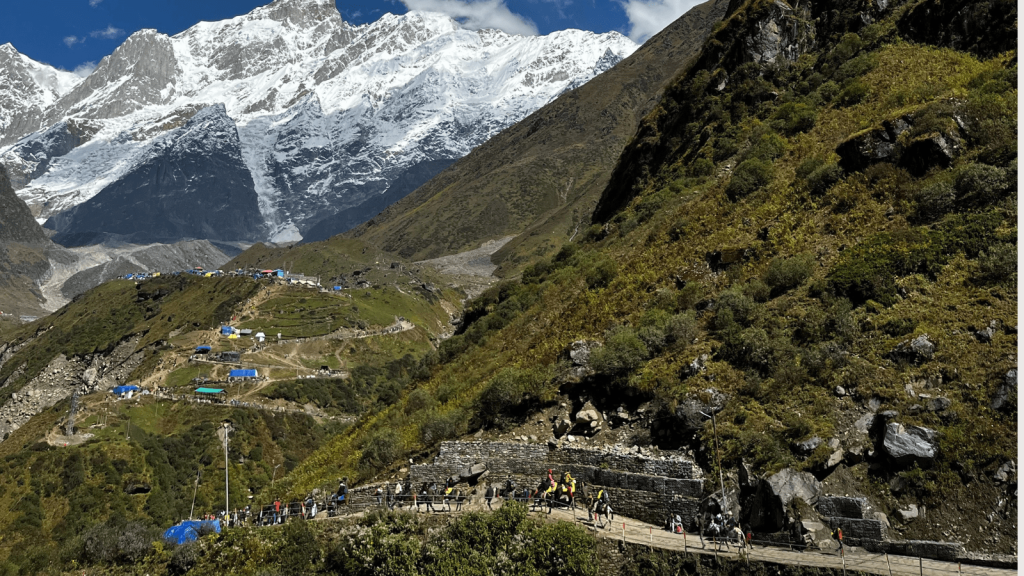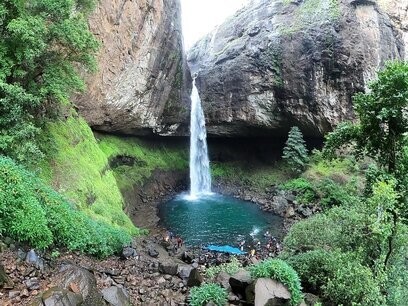Snakes of Maharashtra
The Sahyadri Mountain ranges of Western Ghats are native to exquisite flora and fauna, including diverse species of plants, flowers, mammals, birds, amphibians, insects, molluscs, and freshwater fishes. Snakes in Maharashtra are very commonly spotted while trekking. Due to its rainforest and rocky terrain, Sahyadris is also a hotspot to herpetofauna with many endemic snake species. In the Western Ghats, one can track down a great populace of Uropeltidae snakes and India's most venomous and non-poisonous snakes. Monsoon is the breeding spell for many species and is the best time to encounter various snakes. Brace yourself to spot some of these slithering friends on your next monsoon trek in the Sahyadris.
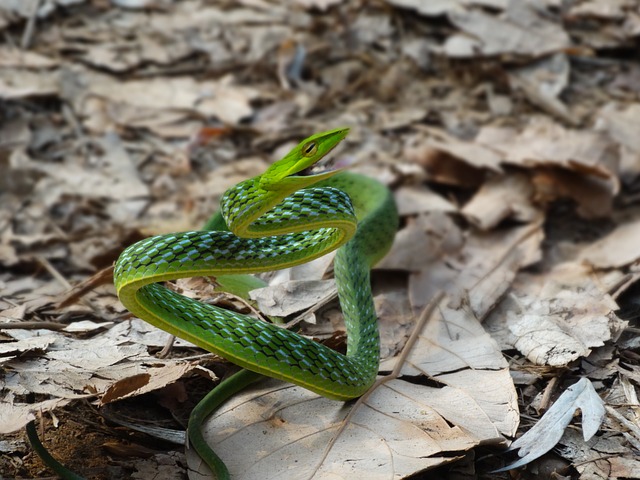
The genus of snakes in Maharashtra is extensive and coiling, rendering the state a paradise for herpetology fanatics. From wolf snakes, worm snakes, tree snakes, cobras to the common trinket, there's a gliding serpent for you, no matter whatsoever your preference might be. When you find yourself in the meandering paths of Sahyadri forests and mountains, keep an eye out for these wondrous little creatures. This dazzling showcase of lesser-known wildlife makes for the best subject to dive into a bottomless ocean of macro photography. Let's look at some of the most common snakes found in the Western Ghats and the treks where they are likely to be found.
Indian Cobra | Spectacled Cobra Naja Naja
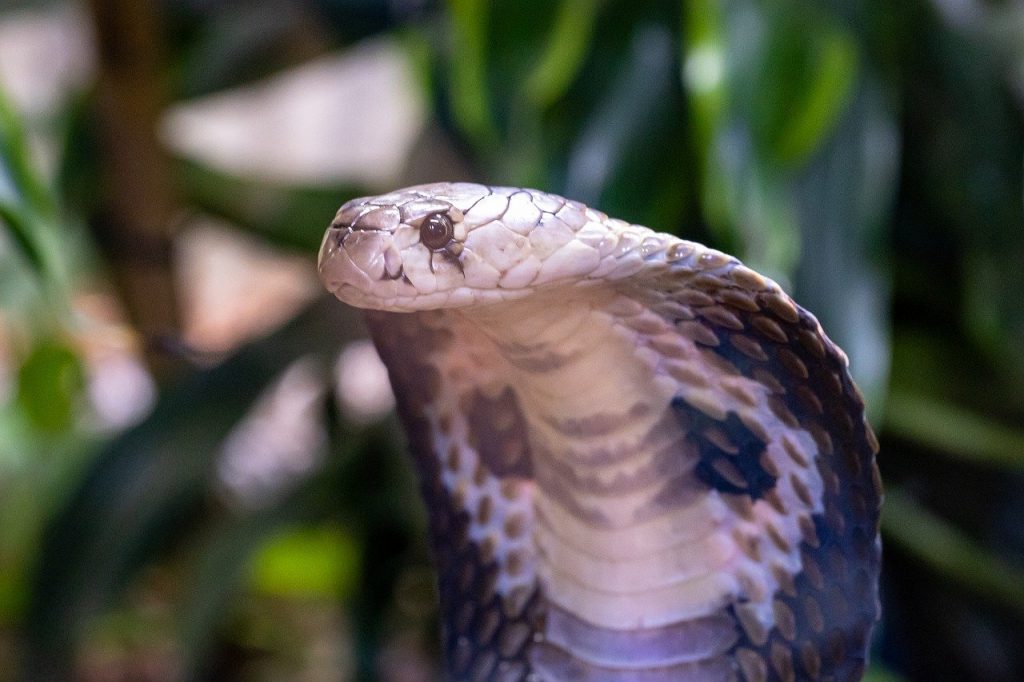
Indian Cobra is the most dangerous snake found in the open plains, rocky terrains, agricultural fields, dense forests, and swamps of Sahyadris. The Indian Cobra is considered holy due to its connection with the lingam of Lord Shiva. Cobras can be seen with snake charmers and worshipped during the Hindu festival of Nag Panchami and Naagula Chavithi. This humungous serpent is among the big four venomous snakes that cause most snake bite-related mortalities in India. The Indian Cobra has huge nostrils and black eyes with rounded pupils. A spectacle symbol is evident when the reptile stretches its hood. The spectacled cobra colour (morph) and designs change as per their geological areas. The most well-known shades being yellow, tan, black, grey, brown and very rarely red. It preys on toads, frogs, mice, lizards, small birds and their eggs, and even small snakes. The Indian Cobra is currently protected under the Indian Wildlife Protection Act, 1972. We can find the India Cobra in the forests of Ghats such as Matheran, Mahabaleshwar, Satara, Katraj, Amboli, Ahupe, Tamhini and Malshej.
Russel's Viper Daboia Russelii
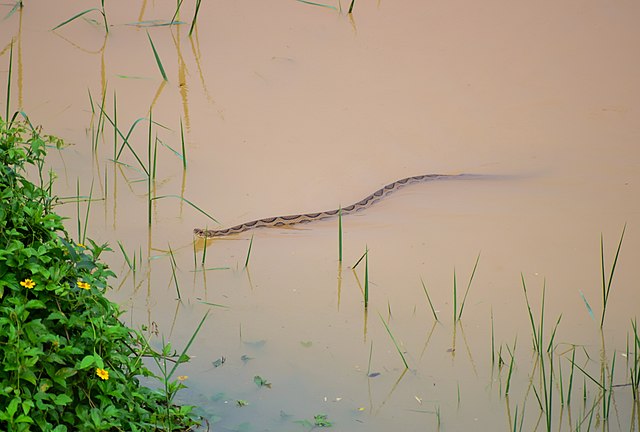
Russell's Viper is a part of the big four most venomous snakes of India. The species is accountable for causing the most snakebite occurrences and deaths among all deadly snakes in India. The scales of Russel's Viper are unequivocally fallen and an unmistakable splendid chain design with an enormous three-sided head. They can be found in open regions, close to human territories where their prey is found in bounty and the bush wildernesses lining farmlands. These snakes are also likely to be under rock fissures, thick leaves, grass, prickly brambles, and succulents. During scorching summer, they may also be found in termite mounds and rat holes. Russel's Viper has heat-detecting pits just beneath the nostrils, which goes about as an infrared vision for the snake in the darkness. They have the longest fangs, which can grow up to 16 mm. The foremost target of these snakes is rodents, lizards, frogs, and other snakes. Russel's Viper can be spotted on treks such as Harishchandragad, Kalsubai, Naneghat, Ajoba, Mahuli, Gorakhgad, Dhak Bahiri, Ratangad fort, Bhairavgad, and Alang-Madan-Kulang Forts. One can also spot Russel's Viper in the forests of Malsej and Amboli Ghat, Andharban, Aadrai, and Bhimashankar. Image source
Indian Krait | Common Krait | Bungarus caeruleus
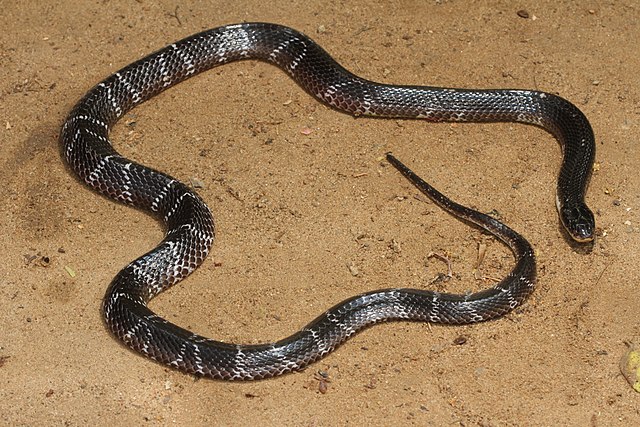
The Common Krait is the most lethal and neurotoxic among the big four snakes in India. It is even scaled, slightly wider headed than its neck with fully black eyes. It is generally found in polished dark, pale, blurred, somewhat blue dim or dim caramel dark tones with restricted combined white stripes that proceed till the tail. There are twelve species and five sub-species of Krait Snakes; some are the common Krait, Banded Krait, and Indian Krait. Found in ranches and gardens, the Common Krait is cannibalistic and also preys on other snakes. Rodents, lizards, and frogs are also part of the Krait's diet. The Common Krait is energetic and violent during the night, whereas they are passive during the day. Indian kraits can be seen in Tadoba Andhari, Navegaon, and Sanjay Gandhi National Parks. You can find these snakes on the trails to Karnala, Manikgad, Chanderi, Raigad, and Peb fort. Image source
Saw Scaled Viper / Death Viper (Echis carinatus)

The Indian Saw-Scaled Viper is a little viper among the eight types of small Viper poisonous snakes family. It is also the smallest member of the Big Four snakes in India. It is a coarse scaled snake with big eyes, a broader head than neck, and a thickset body. They are found in sandy and rocky regions as well as soft soil and shrublands. This Viper is primarily nocturnal and is found lounging in the morning sun on short thorny bushes, behind loose tree barks or rocks. Saw Scaled Vipers are great climbers and are also found on bustling streets during winter to find warmth. They slither by sidewinding and make a hoarse sound, similar as little a saw. It feeds on rodents, mammals, lizards, frogs, and various arthropods, such as scorpions, centipedes, and large insects. The Saw Scaled Viper can be found of treks such as Chanderi fort, Haji- Malang, Peb fort, Kalavantin Durg, Prabalgad fort, Salher fort, Salota fort, Mulher fort, Mora fort and Hargad fort. Image source
Bamboo Pit Viper | Indian Green Pit Viper | Trimeresurus gramineus
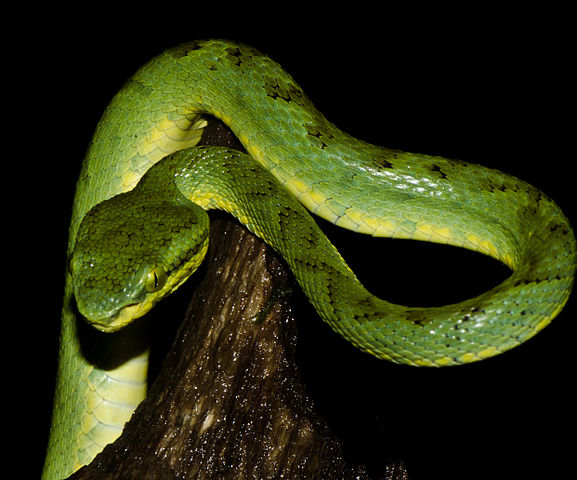
The Indian Green Pit Viper knew as Bamboo Pit Viper is a toxic species endemic to the Western ghats of Maharashtra. This hemotoxic species is vivid green and can be recognized by its trilateral head, which is extensive than its neck. The snake also has black patterns and a yellow abdomen. Their venom is adapted primarily to kill prey such as frogs, lizards, birds, and rodents. They are typically arboreal, living in vines, bamboos, and bushes but can also be found on rocks and close to the streams. The Bamboo Pit Viper can be spotted on treks such as Harishchandragad, Kalsubai, Naneghat, Ajoba, Tung fort, Jivdhan fort, Ratangad fort, Bhairavgad, and Alang-Madan-Kulang Forts. One can also spot Green Pit Viper in the forests of Malsej and Amboli Ghat, Ulhas Valley, Valvan, Aadrai and Bhimashankar, and Sanjay Gandhi and Navegaon National Park. Image source
The Malabar Pit Viper / Rock Viper (Trimeresurus malabaricus)
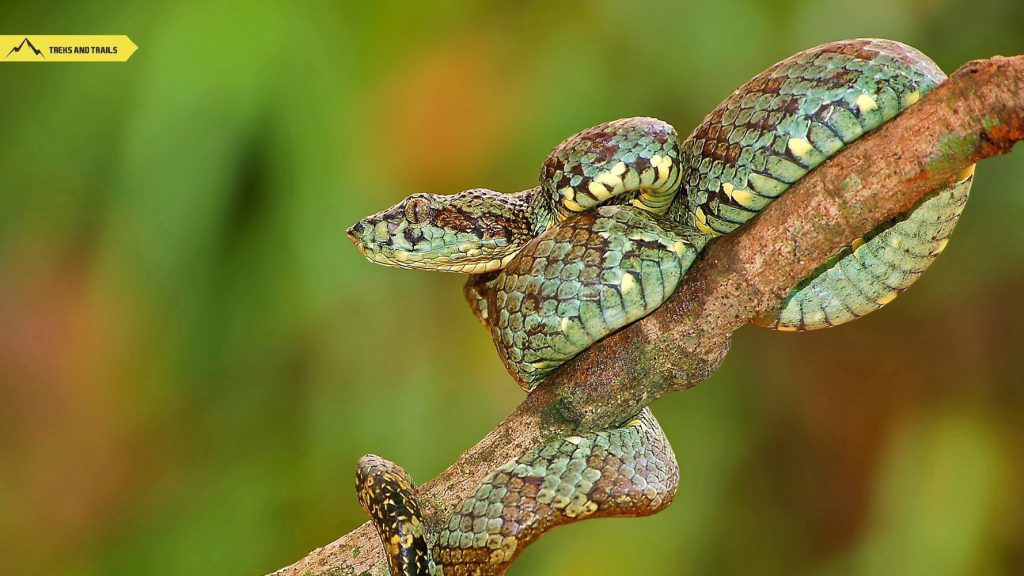
Malabar Pit Viper is an exceptionally venomous, sluggish pit viper type of snake endemic toward the Western Ghats. They are generally seen between elevations of 2000 and 7000 feet. Dwelling in evergreen and semi-evergreen woods and meadows, Rock Vipers can be found on rocks close to streams. In the clammy woods, the pit snake can stay in bushes, on low vegetation and ground. Malabar Pit Vipers show a scope of tones from green, brown, orange, yellow to chocolate brown, empowering them to disguise well in their background. These snakes have prehensile tails that guide them in getting their prey. It feeds on geckos, tree frogs, and musk wenches, among other little creatures. The Rock Viper can be spotted on treks such as Harishchandragad, Ajoba, Vasota fort, Jivdhan fort, Ratangad Fort, Rajgad fort, Korigad fort, and Tikona fort. One can also spot Green Pit Viper in the forests of Koyna Jungle and Ghats of Malsej, Tamhini, and Amboli.
Indian Rock Python (Python molurus)
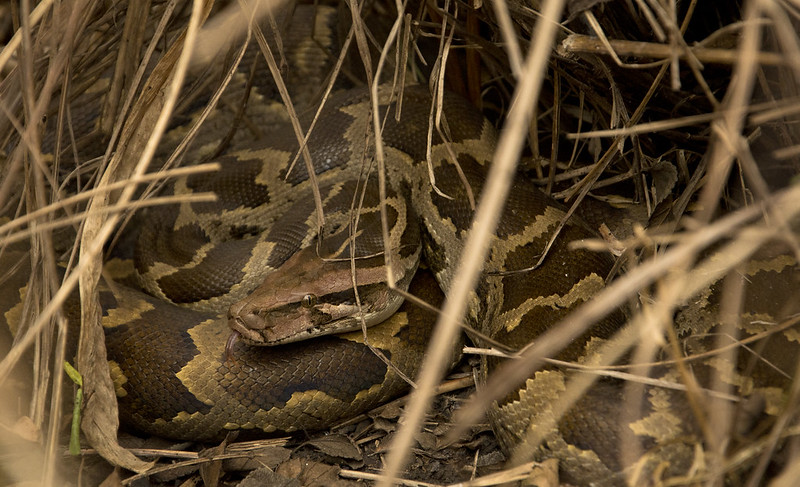
Rock pythons are plentiful in Maharashtra and are native to rocky foothills, swamps, grasslands, and rainforests. The Rock Python is a non-venomous snake with yellow and black colour, which differs depending on its territory. The rock python is one of the heaviest and longest snakes of India. They can grow more than 9 meters (about 30 feet) in length and have heat-sensing pits on the jaw. They are mostly nocturnal and not seen around in the daytime. Even after being bulky, these snakes are profoundly arboreal, living among trees and their foliage. Indian Rock Pythons fit to the cluster generally known as a boa constrictor. Their strategy for killing the prey is by blocking the airway of the prey or cutting off the blood supply by winding around the prey's body, causing heart failure and on-the-spot death. Ghangad fort, Kailasgad fort, Tikona fort, Andharban forest, Devkund waterfalls, Kolad, and Tailbala are some of the treks where one can encounter the Indian Rock Python. Image source
Green Vine Snake (Ahaetulla nasuta)
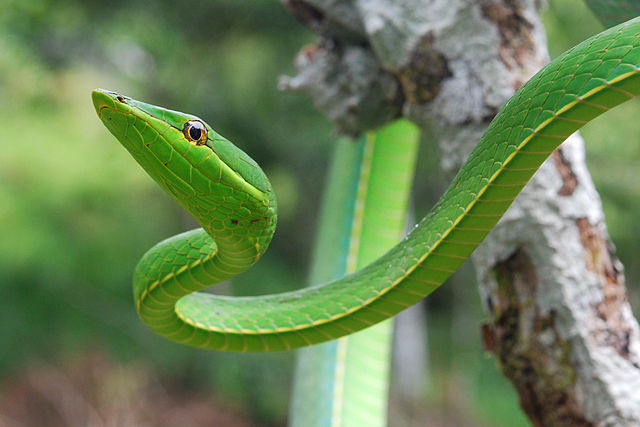
The slightly venomous Green Vine snake is the most prevalent Ahaetulla species in India. This beautiful and often camouflaged snake is found in evergreen and deciduous forests as well as the grasslands of the Western Ghats of Maharashtra. This vine snake is simply recognized by its slim green body and arrow-like head. These snakes are ovoviviparous, which means that they have live births, instead of laying eggs like most other snake species. Its diet consists of frogs and lizards, which are hunted using its binocular vision. One can stumble upon a Green Vine snake at Satara, Kaas Plateau, Koyna Jungle, Vasota fort, Nasrapur, Bhimashankar, Aadrai, Amboli, and Andharban. These snakes can also be easily spotted at Tikona fort, Visapur fort, Rajgad fort, Peb fort, Chanderi fort, and Garbett Plateau. Image source

